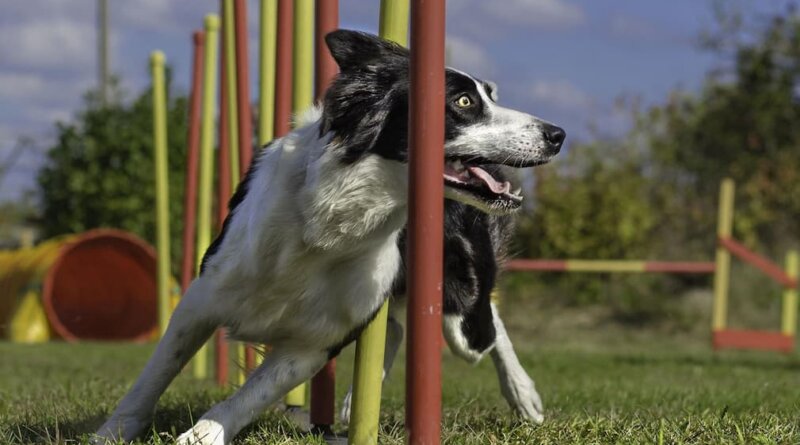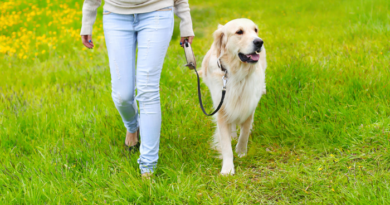Benefits of Dog Agility Training
Are you looking for a fun way to bond with your dog and put his instincts to work? Check out dog agility training. Agility exercise is an exciting, interactive way for you and your pup to stay in shape and have fun. Dog agility is a competitive sport, but it can also be an excellent way for your furry friend to learn new things and bond with you. It tests your pup’s mental and physical agility, as well as its obedience skills. With the right approach and consistent training, you can develop teamwork between you and your canine while working on physical fitness and teaching them new commands. This type of training also strengthens the focus and problem-solving skills of the handler and their furry companion.
Introduction to Dog Agility Training
Dog agility is a popular canine sport in which a handler directs a dog through various obstacles such as a tunnel, teeter-totter, tire jump, weave poles, pause table, and standard jumps. During competitive agility events, pet owners attempt to navigate dogs through a course as quickly and accurately as possible.
Why Should My Dog Do Agility Training?
Agility training provides dogs with physical and mental stimulation. When done correctly, it teaches proper socialization skills by interacting with different breeds in various scenarios, thus helping to create a strong bond between owner and pet. With agility exercises, dogs learn how to react and stay focused even in distracting environments.
Agility Will Fulfill Your Dog’s Natural Instincts
Dogs are natural hunters in the wild, chasing and running after various prey. While pursuing food, dogs must often follow rabbits and foxes through a forest and navigate multiple barriers. Their instincts involve jumping over fallen logs, climbing steep slopes, and squeezing through bushes and vegetation. Since the end goal is to catch up with prey, time is of the essence, and the faster a dog runs, the better their chances of ending up with a satisfying meal. Agility courses are designed to mimic these realistic scenarios and fulfill your dog’s hunting and chasing desires.
Improved Health & Fitness
Agility exercises have many benefits for both dogs and pet owners. Not only will it help tire out a dog and reduce behavior problems, but agility activities also offer many health benefits. It can improve physical strength and stamina, as well as mental alertness. For pet owners, it’s a fun way to engage with their pet while providing aerobic exercise that they can enjoy together—leading to better physical and mental health for both! Agility instruction encourages communication between owner and companion, burns calories, and builds confidence and trust. This type of training also provides a unique way to socialize pets with other animals in the same environment.
Enhanced Mental Stimulation
Agility training assists with mental stimulation by providing challenging tasks to focus on and work through. It encourages problem-solving skills, allowing the dog to develop their capacity for learning and critical thinking. The challenge of mastering new tricks keeps a dog’s mind sharp, which can help prevent boredom and feelings of loneliness.
Increased Bonding with Pet Owners
Agility courses are designed so dogs can only complete them with the handler’s help. The trust between owner and dog will increase as the pup must rely on verbal and handler instructions to navigate. Helping your dog to pass through obstacles will help reinforce basic obedience commands and ultimately help to improve behavior outside of training.
Improved Behavior in Dogs
Dogs target their energy and attention in a controllable manner during agility training, allowing them to learn appropriate behavior. It also improves coordination and confidence, improving obedience and communication between the dog and its owners.
Creative Outlet for Dog and Owner
Dog agility training provides an excellent creative outlet for the canine and the owner. The activity encourages the pup to think independently, push its boundaries, and develop problem-solving skills. As a pet owner, you can get creative with designing a course and motivate your dog in various ways.

Types of Agility Exercises for Dogs
Some agility training exercises for canines include obstacle courses, weave poles, jumps, tunnels, and other obstacles that require precise timing and communication from the trainer. Other activities involve retrieving objects and items in a timed fashion and more complex exercises like herding or heelwork.
Jumps Used in Agility Training
Teach your dog to jump by having it on a leash and giving a specific command for each jump, such as “big jump.” Approach the jump steadily; in most cases, your pup will hop over it. Emphasize good behavior with rewards and positive reinforcement.
Distance Control Exercises
Distance agility training for dogs is an exercise program designed to build a strong bond between the dog and the trainer and increase assurance and compliance. In this form of agility, the dog must complete obstacles from a distance without direct guidance from the handler. It requires greater communication ability and understanding of cues from both parties for it to be successful. Some trainers use verbal cues such as whistles, hand signals, and body language, while others may use clickers. Training can also include
- Jumping
- Weaving in and around poles or pop-ups
- Navigating through tunnels or jumps
The goal is for the dog to accurately understand commands given at a distance so you can trust their behavior even when apart.
Weave & Tunneling Techniques
Weave and tunneling agility training for dogs is a fun way to help them navigate their environment confidently. It can help teach them commands and problem-solving skills and build physical coordination. Weaves involve a series of poles or weave sticks the dog has to maneuver between while keeping their body low and moving quickly. Tunnels are usually flexible conduits through which the dog must crawl before reaching the end goal. Both weaves and tunneling are part of an obstacle course that challenges your pup’s balance, speed, and focus as they confidently make their way around the course. Training your pup in these maneuvers can enhance physical fitness and mental stimulation.
Tips for Starting a Dog Agility Course
Creating a dog agility course at home can be fun and educational for your canine. The most basic tools needed are jumps, tunnels, and weave poles. You’ll want to space each element out so that your pup can practice their turning skills, and you also want to make sure the course is low enough not to cause any injuries. Additionally, when setting up the course in your backyard, look for obstacles like trees, plants, or furniture around the house that can help create a more challenging route with natural elements.
Online Resources
There are plenty of online resources to help set up a course at home, such as instructional videos and tutorials on constructing each obstacle. Additionally, online stores provide an array of products specifically made for canine agility exercises that can be used to assemble your personalized course at home.
Final Tips for Agility Training Your Dog
Agility training for your dog is a great way to have fun and help build your bond with your pet. When training, it’s essential to remember that consistency is vital, and you should only move forward when both you and your pup are comfortable with a task. Additionally, it’s important to keep each session relatively short — no more than 15 minutes at a time for puppies — so that your pup doesn’t get overwhelmed or burned out. Finally, make sure to reward the successful completion of tasks, no matter how small; this will motivate and further encourage progress.
- Start young
- Train your dog to leave your side and stay close to objects
- Teach and strengthen focus
- Start with jumps low to the ground
- Work on balance
- Incorporate a pause table
- Have patience




